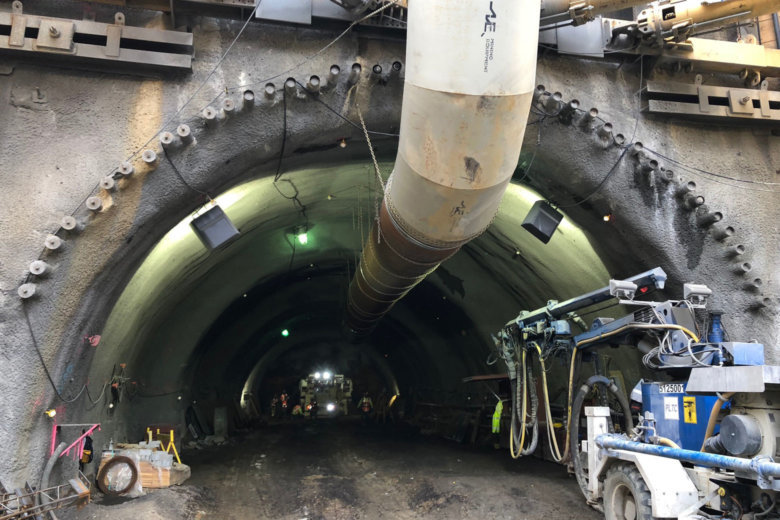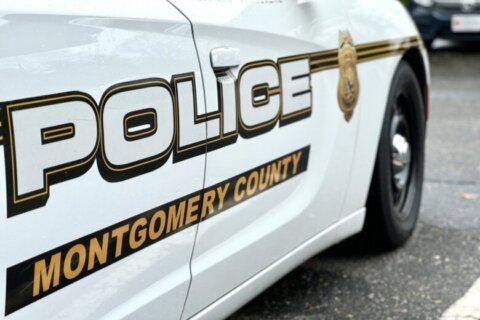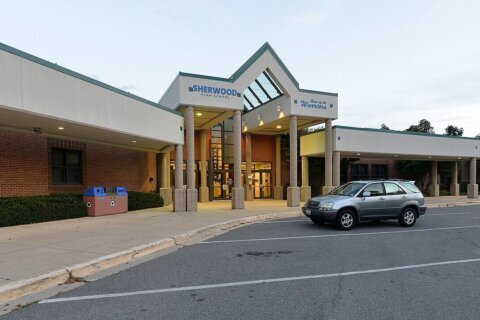This article was republished with permission from WTOP’s news partners at Maryland Matters. Sign up for Maryland Matters’ free email subscription today.
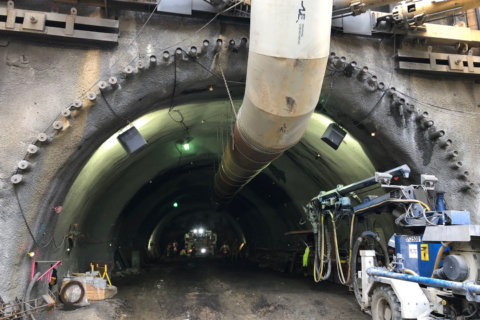
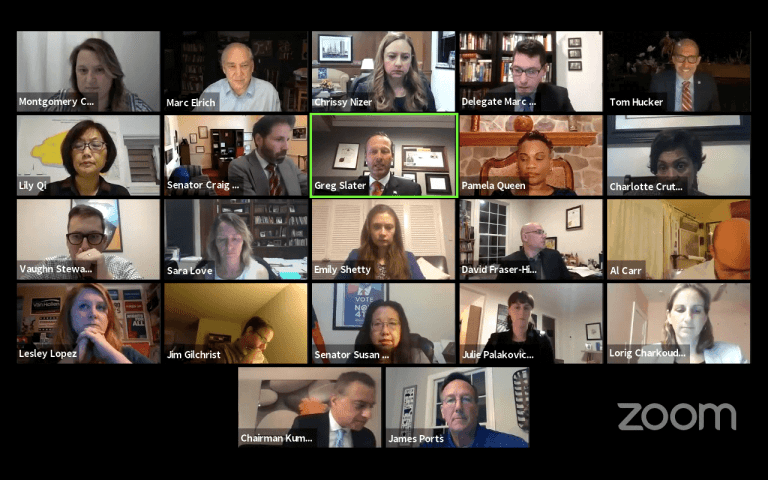
This content was republished with permission from WTOP’s news partners at Maryland Matters. Sign up for Maryland Matters’ free email subscription today.
Montgomery County’s top elected officials implored Maryland’s transportation secretary Thursday night to scale back the plan to add four lanes to Interstate 270 and the Capital Beltway — and to adopt a more conservative approach to financing the project.
They said the collapse of the Maryland Department of Transportation’s contract to build the Purple Line transit project illustrates the risks of government’s use of “public-private partnerships” on big-ticket projects.
“I think it is clear that the Purple Line ‘P3’ can only logically be described as a financial catastrophe,” said Del. Kumar P. Barve (D-Montgomery), chairman of the House Transportation and Environment Committee.
“I’m very concerned that we’re going to have a huge version of the Purple Line P3 foisted upon us because we haven’t done the things that contracting officers typically do in the private sector,” added Barve, an accountant who has worked for government contractors. He said he “would have been fired” if a deal he worked on went south the way the Purple Line project has.
County Executive Marc B. Elrich (D), state lawmakers and members of the Montgomery County Council made their comments during MDOT’s “road show,” the annual public hearing held to discuss the projects contained in the state’s rolling six-year Consolidated Transportation Program. This year’s hearing was held online.
In 2017 Gov. Lawrence J. Hogan Jr. (R) unveiled a plan to add four privately-financed toll lanes to Interstates 495 and 270. The lanes would be maintained at the concessionaire’s expense; existing lanes would remain available free of charge. Tolls of varying amounts would be set and kept by the chosen contractor.
Barve and Elrich said the state should build two reversible lanes on I-270 — southbound in the morning, northbound in the evening — instead of four.
“We continue to believe a two-lane reversible solution meets the needs of the county,” Elrich told Transportation Secretary Greg Slater and other top MDOT officials. “It provides capacity in the peak directions in the morning and the evening, and it spares you the cost of two extra lanes, which would just add to the emptiness of lanes on 270 in non-peak directions.”
“You’ve got an enormous project here,” Elrich added. “Anything you can to do manage the costs and achieve your goals is something I think… people should be willing to look at.”
Barve, whose district is bisected by Interstate 270, said, “I still do not understand why reversible tolled lanes isn’t a good solution. I still don’t understand why the P3 project has to be as large as the proposed price that’s been put before us.”
“I think my bias would be in favor of a less expensive, more practical solution,” he added.
The “express toll lanes” project, which includes a partnership with Virginia to replace the aging American Legion Bridge, is Hogan’s top second-term transportation priority. While he has supported some changes to the phasing of the plan, he has resisted calls for larger-scale alterations.
Lt. Gov. Boyd K. Rutherford (R) on Friday appeared to reject the suggestion that Maryland change its approach for adding capacity to the two highways.
“I don’t think it’s the model that was the problem,” he told Kojo Nnamdi on WAMU Radio’s “Politics Hour.” “It was the particular constructor that was having — or is having — financial problems outside of this project. Public-private partnerships are being used all around the world with a lot of success.”
Rutherford said the Purple Line “will continue” with “a slight delay.”
The state has taken over management of many of Purple Line Transit Partners’ key contracts in the wake of the consortium’s decision to walk away from the half-built rail line.
“I think we’ll end up substituting a different contractor into the team and it’ll get done,” he added. “If not, we’ll take it over.”
In the wake of the lengthy and bitter contract that led PLTP to abandon its 36-year contract to finance the line, Elrich said MDOT should finance the highway expansion itself.
“The simple fact is you can borrow money for less than anybody else can, and money’s going to be a critical thing here,” he said. “To the extent that the state can manage its borrowing, and not rely on the third party, can help you reduce costs in a way that would help you complete this project.”
Montgomery officials expressed alarm over reports that it could cost as much as $49.63 to drive express toll lanes from Frederick to Shady Grove during the morning commute.
The estimate was derived by transportation analysts at the Metropolitan Washington Council of Governments who found per-mile costs estimates buried deep in the state’s 19,000-page Draft Environmental Impact Statement on the highway-widening project.
Sen. Cheryl C. Kagan (D-Montgomery), who represents Rockville and Gaithersburg, told Slater that Hogan’s project “just hasn’t earned buy-in.”
“We have a lot of constituents that are not going to able to afford [express toll lanes] yet need to able to drive to work,” she said.
Slater told Montgomery leaders he has been in daily negotiations with PLTP and he has tried to determine why the Purple Line contract unraveled.
“I have been living and breathing the Purple Line, probably over the last six months,” he said “working back, somewhat forensically, to understand from the beginning, how we got there. I believe that there’s a lot of lessons learned” from the Purple Line.
‘We got taken to the cleaners’
In an interview with Maryland Matters, Elrich said the collapse of the Purple Line in midstream raises fundamental questions about government’s ability to negotiate in a manner that protects taxpayers.
“This experience has demonstrated that we don’t know what we’re doing. We really don’t,” he added. “We got taken to the cleaners.”
“You had an agreement where you didn’t even have binding arbitration if you got into a disagreement,” he added. “It demonstrated pretty much everything that can go wrong. I just don’t believe you need a P3 on [the highway project].”
Slater is highly regarded by local leaders, who view him as more candid, collaborative and flexible than his predecessor, former Transportation secretary Pete K. Rahn.
He said he recently spent a few hours driving the I-270 corridor and walking Rockville neighborhoods near the project with the city’s mayor, Bridget Donnell Newton.
“We had a really good conversation about how the community feels,” Slater said. “We’re committed to continuing to work with the communities and continuing that collaboration. … She expressed a lot of the same concerns that you’re expressing.”

